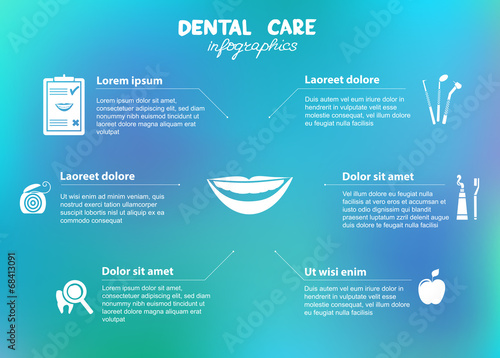The Following Period Of Oral Surgery: Innovation Innovations And Advancements Improving The Specialized
The Following Period Of Oral Surgery: Innovation Innovations And Advancements Improving The Specialized
Blog Article
https://lorenzoqmgbv.59bloggers.com/33429633/obtain-the-inside-scoop-on-that-can-absolutely-take-advantage-of-invisalign-uncover-the-vital-factors-that-might-affect-your-smile-improvement -Jama Guerra
Welcome to the globe of oral surgery, where developments and breakthroughs are shaping the future of the field! In this amazing world, you'll witness the transformative power of robotics, the sophisticated marvel of 3D printing, and the game-changing impact of minimally invasive strategies.
The future of oral surgery holds a promise of accuracy, performance, and boosted client results. With the help of innovative robotics, cosmetic surgeons are able to perform complex procedures with greater accuracy and control.
3D printing innovation is revolutionizing the development of dental implants and prosthetics, offering personalized solutions that fit effortlessly right into each client's distinct anatomy.
Additionally, minimally invasive strategies are reducing post-operative pain and recovery time, enabling patients to go back to their daily lives sooner.
Prepare yourself to check out the interesting innovations and breakthroughs that are reshaping the landscape of oral surgery!
Developments in Robotics
One major development in dental surgery is the use of robot innovation, which enables precise and efficient surgical procedures. With the help of robot systems, oral doctors have the capacity to do intricate surgical treatments with improved accuracy, lessening the danger of human error.
These robotic systems are furnished with sophisticated imaging modern technology and accurate instruments that enable doctors to navigate via elaborate physiological frameworks easily. By using robotic technology, specialists can achieve better surgical accuracy, resulting in improved client end results and faster healing times.
On top of that, the use of robotics in dental surgery permits minimally intrusive procedures, decreasing the injury to surrounding cells and promoting faster recovery.
3D Printing in Oral Surgery
To improve the field of oral surgery, you can explore the subtopic of 3D printing in dental surgery. This ingenious innovation has the possible to revolutionize the way oral doctors run and treat clients. Below are four essential ways in which 3D printing is shaping the area:
- ** Personalized Surgical Guides **: 3D printing enables the development of extremely accurate and patient-specific surgical overviews, enhancing the precision and performance of treatments.
- ** Implant Prosthetics **: With 3D printing, dental cosmetic surgeons can produce customized dental implant prosthetics that perfectly fit a patient's one-of-a-kind composition, leading to much better end results and person fulfillment.
- ** Bone Grafting **: 3D printing enables the production of patient-specific bone grafts, reducing the requirement for standard implanting methods and enhancing healing and healing time.
- ** Education and learning and Training **: 3D printing can be used to produce realistic surgical designs for academic purposes, permitting dental doctors to exercise complex procedures prior to executing them on clients.
With its potential to boost precision, modification, and training, 3D printing is an exciting growth in the field of oral surgery.
Minimally Invasive Strategies
To even more progress the field of oral surgery, accept the potential of minimally intrusive methods that can significantly profit both surgeons and individuals alike.
Minimally intrusive techniques are transforming the field by decreasing surgical trauma, minimizing post-operative pain, and accelerating the healing procedure. These methods involve utilizing smaller sized cuts and specialized instruments to carry out treatments with accuracy and efficiency.
By making use of innovative imaging innovation, such as cone beam computed tomography (CBCT), specialists can precisely intend and implement surgical procedures with marginal invasiveness.
Additionally, using lasers in oral surgery permits precise tissue cutting and coagulation, leading to decreased bleeding and lowered recovery time.
With minimally invasive methods, patients can experience much faster recuperation, decreased scarring, and improved outcomes, making it a necessary element of the future of dental surgery.
Final thought
So, as you can see, the future of oral surgery is unbelievably appealing, with amazing technologies and developments shaping the field.
From simply click the next internet site in robotics to using 3D printing and minimally intrusive techniques, dental specialists are changing the way they offer treatment.
While some may bother with the potential expense related to these improvements, it is necessary to bear in mind that these modern technologies eventually boost patient end results and decrease recuperation time, making them well worth the investment in the long run.
